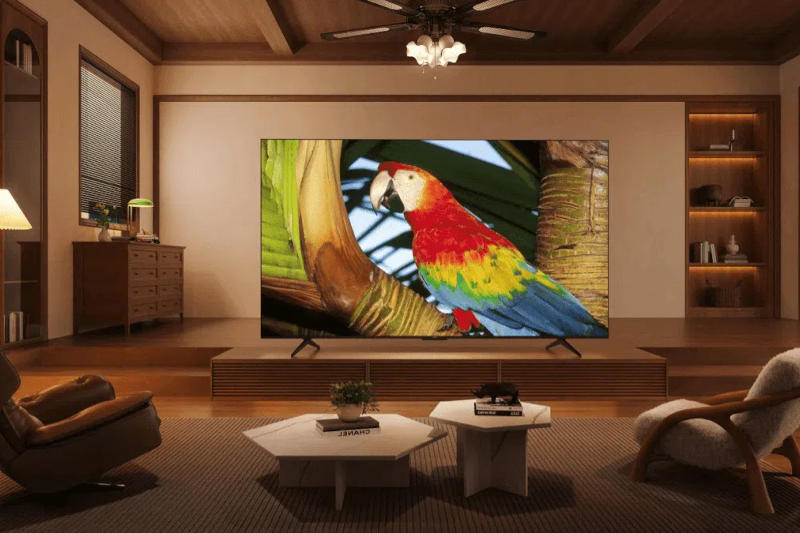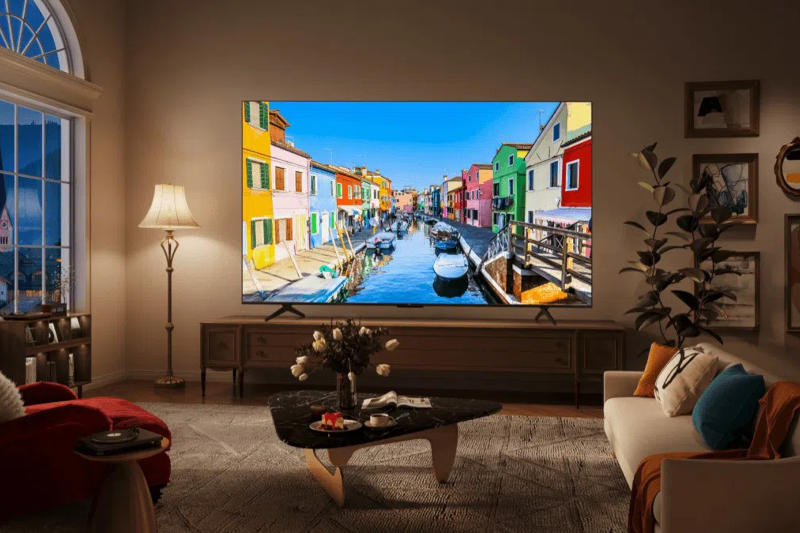Chinese home appliance manufacturer TCL has found itself in the spotlight: third-party experts tested three of its TVs, which are positioned as models with quantum dots, and there was no sign of the presence of quantum dots on them. The manufacturer rejected these results.

Image source: tcl.com
Quantum dots are semiconductor components several nanometers in size that produce different colors of light when struck by light of a certain frequency. The color emitted by a quantum dot depends on the size of the quantum dot itself, as it affects the wavelength. This solution helps premium TVs and monitors cover a wider color range. Quantum dots have become a big selling point for QLED, QD Mini LED and QD-OLED models, and they come with a higher price tag. A manufacturer who sells standard models claiming to have quantum dots risks both their reputation and their own well-being—such actions can lead to legal consequences.
South Korean technology publication ETNews published a research report according to which three TCL TVs, which are positioned as quantum dot models, in fact lack these quantum dots. The customer was the Seoul company Hansol Chemical; the tests were carried out by SGS and Intertek, whose headquarters are located in Geneva and London, respectively. Experts examined the TCL C755 model, announced as a Mini LED TV based on quantum dots; TCL C655, positioned as a QLED model; as well as TCL C655 Pro – also QLED. According to research results, no indium and cadmium were found in televisions – important materials without which it is impossible to implement quantum dots. Cadmium should have been detectable if it had been present at a minimum concentration of 0.5 mg per kg; they tried to detect indium in concentrations of 2 and 5 mg/kg in different laboratories.
In response to the publication of the material, a TCL representative said that the company “manufactures TVs with quantum dot films supplied by three companies” and “the number of quantum dots on the film may vary depending on the supplier, but cadmium is undoubtedly present.” TCL then published the results of another study commissioned by Guangdong Region Advanced Materials, one of the suppliers of quantum dot films. Interestingly, this study was again carried out by SGS, and this time they found the presence of cadmium in the films at a concentration of 4 mg/kg. TCL also said it had “confirmed the fluorescent characteristics of quantum dots” and provided a spectrogram that purportedly indicates the presence of quantum dots in TV films.

One obvious reason for the difference in results is different testing methods. The study where cadmium was discovered looked at quantum dot films supplied by TCL. A study commissioned by Hansol looked at quantum dot films on off-the-shelf TVs from a Chinese manufacturer. This may indicate that TCL does not have good quality control, and the concentration of quantum dots may vary from batch to batch or even within the same TV. However, this does not mean that TCL has any intention of deceiving consumers. According to an expert interviewed by Ars Technica, the most adequate research method would not be measuring the concentration of quantum dots, but testing the image indicators produced by the TV – color gamut and brightness.
It’s also worth noting that TCL talks about using cadmium in QLED and Quantum Mini LED TVs, but doesn’t mention India. The presence of both elements in quantum dot TVs is not necessary. Some quantum dot screens are based only on quantum dots themselves, while others use a mixture of indium and/or cadmium quantum dots and phosphors – these are materials of a completely different class, but their goal is the same conversion of the blue color of LEDs into green and red. In the latter case, the content of quantum dots can be ten times lower, and it really will not fall into the minimum permissible value according to Hansol standards of 0.5 mg/kg. This option is cheaper to produce, and the color gamut, color purity and brightness will be inferior to displays based on “pure” quantum dots. And it’s likely that TCL will use it in entry-level QLED models.
It is also worth noting that the European Union has a RoHS directive (Restriction of Hazardous Substances Directive), which limits the content of harmful substances in products in the region. In particular, it does not allow the mass concentration of cadmium to exceed 0.01%, but there is an exception that allows it to be used in an amount of 0.2 g per m² in displays. However, in most quantum dot screens, cadmium is either used in small quantities or not used at all. Thus, Samsung claims that it only uses cadmium-free quantum dots. At the same time, the Korean chemical company Hansol, which ordered the study, does not supply its products to TCL, but sells them to Samsung. Samsung and LG still remain the world’s largest TV manufacturers, but Chinese companies are increasingly trying to challenge this status. Therefore, Hansol can be seen as a biased party.
Finally, it is difficult to imagine that such a large company as TCL would risk its reputation and simply begin to deceive customers, experts say. Making “fake” quantum dot films without quantum dots would cost almost as much as making real ones, but without the image quality benefits. It is possible that TCL uses quantum dots in small quantities together with phosphorus-based materials – the picture quality may indeed be worse than that of TVs with screens based on other solutions, but this will mean that there are still quantum dots in TCL products. A series of further and more detailed studies of the company’s products may clarify the situation.